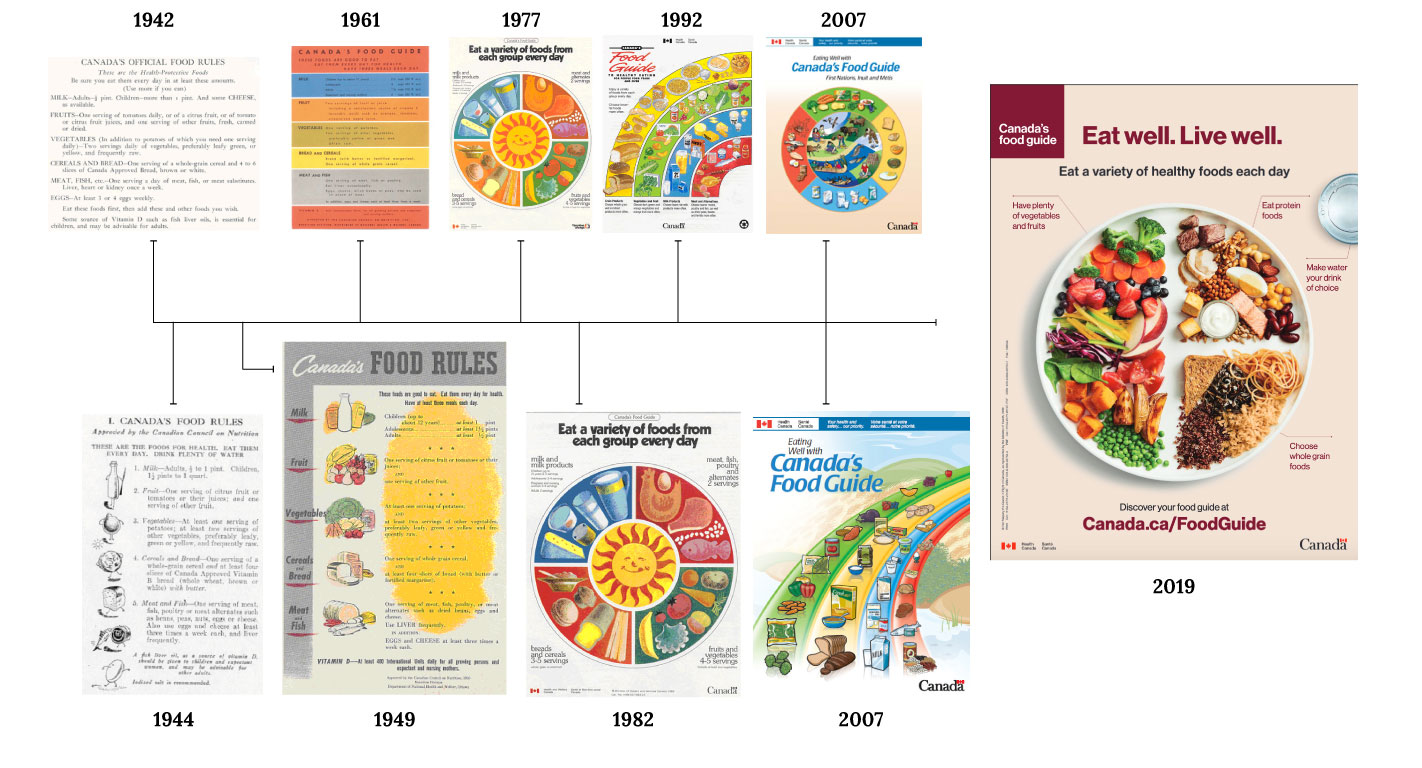Emergence of Canada’s New Food Guide
There have been many variations of the food guide over several decades, as illustrated in Figure 1.2. The original food guide emerged in 1942; however, it was referred to as “food rules” at the time (Health Canada, 2019a). As you can imagine, the term “rule” is no longer used because it implies rigid principles with no recognition of social and cultural context. Prior to the 2019 version, the most recent adaptation to the food guide happened in 2007. That iteration included recommendations based on some studies and focused on four food groups: Vegetables and fruit; Grain products; Milk and alternatives; and Meat and alternatives. It also included recommended number of servings in each food group and information about what is considered a serving for different types of food, based on gender and age.

In early 2019, Health Canada released a new food guide with accompanying documents such as “Canada’s Dietary Guidelines for Health Professional and Policy Makers.” The aim of these resources is to support Canadians in patterns of healthy eating and nutritional well-being (Health Canada, 2019b). Alongside evidence-informed healthcare and decision making, it was time for a new food guide, especially since the last one was released over ten years ago. As a healthcare professional and/or a student in a health-related program, you are probably aware that guiding documents and resources should be informed by current evidence, which is typically considered five to ten years.
The new version of Canada’s Food Guide, hereafter referred to as Canada’s Food Guide 2019, has piqued great enthusiasm and interest because this version is based on evidence gathered from scientific reports, particularly systematic reviews, and wide-ranging consultation with health professionals, population and nutrition experts, national Indigenous organizations, and the general population (Health Canada, 2019b). The fact that this food guide is evidence-informed is significant because it aligns with the discourse of evidence-informed decision making in healthcare and the abundance of health benefits and risks related to nutritional intake. Additionally, previous food guides were influenced by the food and beverage industry, which biased the recommendations.
Check out Film Clip 1.1 of an audio podcast by historian Dr. Ian Mosby who talks about the evolution of the food guide and the limitations of the current version.
Film Clip 1.1: Dr. Ian Mosby speaking about the evolution of the food guide
Content in the first paragraph was adapted, with editorial changes, from Nutrition and Labelling for the Canadian Baker by go2HR and is used under a Creative Commons Attribution 4.0 International License.
The combination of current and rigorous evidence with social context to inform healthcare and decision making.

